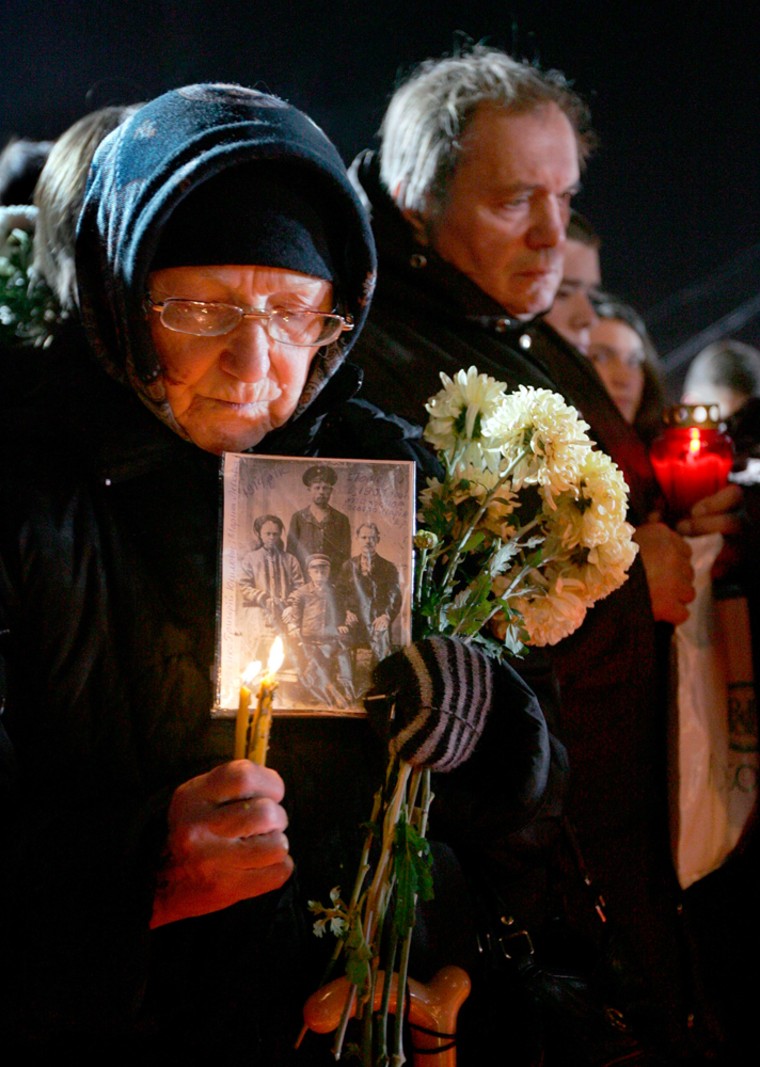Holding candles, thousands of people from all over Ukraine gathered Saturday on a square in Kiev to mourn the millions who died of starvation during a famine engineered by the Soviet authorities 75 years ago.
President Viktor Yushchenko, speaking to the crowd, once again called on the international community to recognize the Holodomor — or death by hunger — as an act of genocide.
“We neither overestimate nor underestimate the scale of this grief,” he said.
Looking out on a sea of light blue and yellow national flags adorned with strips of black cloth, the president called for the removal from Ukrainian territory of all monuments to the totalitarian Soviet regime.
Accounts of the great famine, long kept secret by Soviet authorities, still divide historians and politicians, not just in this nation of 47 million but throughout the former Soviet Union.
Some are convinced that the famine targeted Ukrainians as an ethnic group. Others argue authorities set out to eradicate private landowners as a social class and that the Soviet Union sought to pay for its rapid industrialization with grain exports at the expense of starving millions of its own people.
The dictator Josef Stalin’s collectivization drive affected the entire Soviet Union, but was particularly calamitous for Ukraine with its rich agricultural land.
“My grandfather had to bury grain and mushrooms deep in a forest and draw maps to find it later,” said Polina Stasyuk, 23, a student from Kiev who attended the gathering. “They had to lead their chimney into the cellar, so that villagers could not smell food when my grandma was cooking.”
Soviets allegedly starved villages
Each village was ordered to provide the state with a quota of grain, but the demands typically exceeded crop yields. As village after village failed to meet the requirements, they were put on a blacklist. The government seized all food and residents were prohibited from leaving — effectively condemning them to starvation.
Yushchenko estimates 10 million Ukrainians died in the famine of 1932-33. Stanislav Kulchitsky, a Ukrainian historian, believes the number is closer to 3.5 million.
“Our family wouldn’t have survived but for my grandfather. He lived in a village and secretly supplied the family, which lived in Kiev, with potatoes,” said Serhiy Derevinsky, 58, holding a picture of his grandfather and a candle.
The Ukrainian parliament has already labeled the famine genocide. So has the United States and some other countries. But Russia, the legal successor to the Soviet state, resists the label, insisting the famine also hit other groups, including Russians and Kazakhs.
